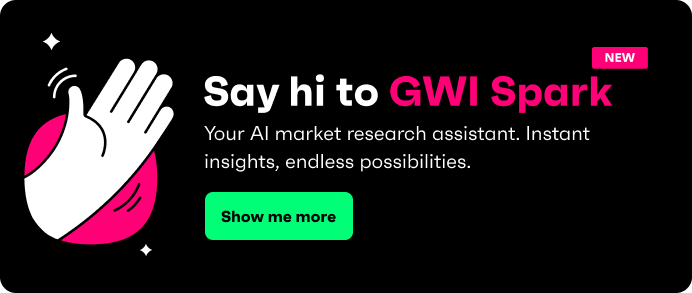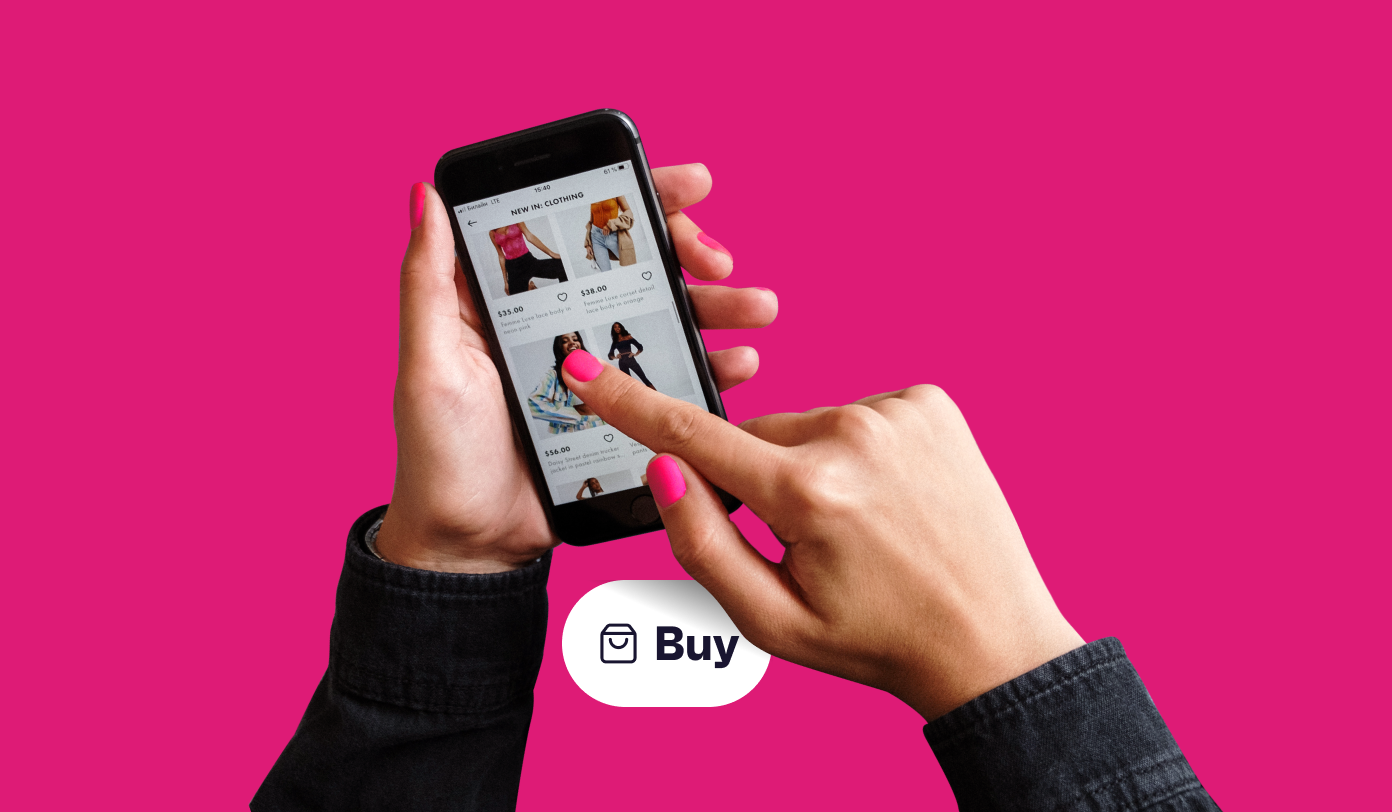Strategic brand collaborations used to look like fun one-offs - a limited drop here, a seasonal stunt there. Now? They’re full-on growth plays. Smarter partnerships are helping brands reach new audiences, build loyalty, and stay culturally relevant.
Here’s how partnerships are shifting from tactical to transformational - and what brands need to know to make them work.
What are retail partnerships today?
Modern retail partnerships are a far cry from short-term co-branded promotions. We’re talking strategic alliances that combine audience reach, cultural relevance, and serious brand equity.
And they’re landing. Take fashion: 2 in 5 consumers say they’d be into luxury/designer brands if they teamed up with a sportswear label or activewear brand. That’s a 39% jump in interest since 2022 - and a clear sign that unexpected pairings are paying off.
Unsurprisingly, retailers are catching on. Take Target and Ulta Beauty. By bringing Ulta’s beauty counters into select Target stores, both brands win: Target gets to level up its beauty offering with trusted, high-demand products - turning a routine shopping trip into a more premium experience. Ulta, meanwhile, gains access to Target’s massive footprint and everyday traffic, making it easier for new customers to discover the brand without stepping into a mall.
Then there’s M&S and Nobody’s Child, a sustainable fashion brand now stocked in M&S stores and online. It’s a smart way for M&S to stay relevant with younger shoppers, while giving Nobody’s Child mass exposure - without compromising its brand identity.
These aren’t just cross-promos - they’re ecosystem plays. Designed to add value across both businesses, they extend reach and keep the customer journey seamless. Whether it’s an in-store integration, a digital collab, or shared distribution, today’s retail partnerships are built for long-term impact, not just short-term buzz.
Why retail partnerships are gaining momentum
Let’s face it - getting noticed is harder (and more expensive) than ever. Customer acquisition costs are up, attention is fragmented, and brand loyalty isn’t what it used to be. That’s where partnerships come in.
By teaming up, brands can pool audiences, split costs, and create moments that cut through the noise. But it’s not just smart business - it’s what consumers actually want.
Today’s shoppers aren’t just buying products, they’re buying into something. Nearly a third (29%) of online retail shoppers say they want brands to feel exclusive - not because they want to be locked out, but because they want to feel in. Part of a club. Part of a story.
This is especially true for Gen Z. They're 20% more likely to want brands to be trendy, and 33% more likely to want them to be young, compared to the average internet user. To this generation, brand choice is about identity - and collabs are the ultimate way to signal taste, status, and belonging.
Exclusivity also drives action. Users who say they want brands to be exclusive are 42% more likely to promote their favorite brand online when they feel involved. When people feel like they’re part of something, they don’t just buy - they share.
Types of retail partnerships
Retail collaborations come in many shapes, each serving a different strategic purpose. Here are a few of the most powerful pairings out there:
- In-store brand integrations - Think of the Ulta x Target collab we just touched on, where product meets convenience, and footfall becomes cross-sell.
- Digital collabs and limited-edition drops - Like Nike x Tiffany, designed for hype, headlines, and sellouts.
- Fulfillment and distribution partnerships - Like Amazon teaming up with DTC brands, combining big-league logistics with indie brand creativity.
- Media and content tie-ins - The Spotify x H&M collab is a good example here, blending culture and commerce for new audience reach.
Some partnerships aim to acquire new customers. Others focus on loyalty or awareness. The best ones tick all three boxes - creating experiences that are hard to replicate and even harder to ignore.
Real-world examples of brand collaborations
These standout partnerships show just how much is possible when brands align on audience, timing, and cultural relevance:
- Balenciaga x Fortnite brought high fashion into gaming culture, showing how brand equity can stretch when the audience fit is right.
- Starbucks x Spotify turned playlists into loyalty drivers - a subtle way to stay front-of-mind across daily moments.
- Adidas x Gucci combined mass market reach with luxury cool factor, offering something both surprising and aspirational.
- Glossier x Sephora brought a cult DTC brand into mainstream retail, expanding distribution without diluting brand value.
These weren’t just collabs - they were cultural events. And they worked because they made sense for both the brands and the audience.
How to find the right partner
It’s not just about big names or aesthetics. The best partnerships start with strategic alignment. Here’s how to find the right fit:
- Start with audience overlap. Tools like GWI can help you map shared interests, motivations, and shopping behaviors.
- Look for brand alignment. Not just logos or style, but values, tone, and how you show up in the world.
- Get clear on your shared goals. Awareness? Sales? Loyalty? You both need to know what success looks like.
- Prioritize quality over clout. Just because a partner is famous doesn’t mean they’re the right fit.
And before you launch, validate the concept. GWI makes it easy to test ideas, identify potential risks, and make sure your audience actually cares.
What GWI data says about what actually works
Some audiences are more primed for partnerships than others - and GWI’s data helps you find them.
Gen Z: All about influence and identity
For example, Gen Z is especially primed for brand collabs, particularly those rooted in culture and influence:
- 20% say they typically discover new brands through celebrity or influencer endorsements - that’s more than millennials (17%)
- They’re also 29% more likely to rely on those endorsements overall
- 27% follow influencers or experts on social media - and they’re 19% more likely to follow beauty experts specifically
- They’re 19% more likely to buy products recommended by influencers
And the appetite for crossover culture is huge - Gen Z is 69% more likely to be interested in luxury brands collaborating with video games or esports, while millennials and other generations under-index for this.
But not every collab hits
Pairings that feel off-brand or mismatched can hurt more than help. Since 2023, there’s been a 22% drop in consumer interest in luxury brands partnering with high-street names like Zara or Uniqlo.
The takeaway: choose partners with care - because when the fit feels forced, audiences tune out.
The role of brand loyalty
Loyal customers are your biggest advocates, and the right partnerships can make that bond even stronger.
- 45% of consumers say they’re loyal to brands they like
- Those loyalists are 26% more likely to feel represented in the advertising they see
- They’re also 21% more likely to describe themselves as fashion-conscious
When you team up with a brand that shares your audience’s values - whether it’s about style, sustainability, or self-expression - it reinforces what your customers already love about you. It shows them that you get them. And that emotional alignment is what turns loyalty into advocacy.
Done right, a smart brand partnership doesn’t just attract new fans - it gives your existing ones even more reason to stick around (and spread the word).
Don’t forget the regional lens
When it comes to brand collaborations, geography matters. The values and expectations consumers bring to the table vary widely - and the most effective partnerships reflect that.
- In LatAm, quality is king. Consumers here are 25% more likely to promote a brand online if the product is high quality, and 51% more likely to be planning a glasses purchase - a great cue for collaborations in fashion, eyewear, or lifestyle.
- In MEA, standing out is everything. 32% of consumers say it’s important, and they’re 54% more likely than average to feel that way - suggesting bold, unexpected partnerships could go further here.
- In APAC, boldness and youthfulness win. APAC shoppers are the most likely globally to want brands to be young (25%) and bold (23%), making the region ideal for experimental, style-forward partnerships.
The bottom line? Great partnerships don’t just reflect brand values - they reflect local ones, too. Regional insights should shape everything from the creative direction to the kind of partner you choose.
Watchouts and partnership pitfalls
Not every partnership is a win. In fact, when they’re not done right, they can do more harm than good. Here’s where brands often trip up - and how to stay on the right track.
- Style over substance. Think flashy, surface-level collabs that feel more like PR stunts than real value-adds. If the partnership doesn’t serve the audience or the business goal, people will see right through it.
- Brand mismatch. When two brands have clashing values, tones, or audiences, it creates confusion - or worse, erodes trust. Think a sustainability-focused brand teaming up with a fast-fashion giant. Audiences notice when things don’t align.
- Uneven value exchange. If one brand brings all the equity, audience, or effort - while the other coasts - resentment can build. Good partnerships are win-win, not win-and-watch.
So how do you avoid these pitfalls?
- Get clear on what you’re trying to achieve - and make sure both sides agree
- Define your KPIs early (and make them measurable)
- Use audience data to validate the idea before you invest
- Gut-check the cultural fit - does this feel right, or just convenient?
The best partnerships are thoughtful, strategic, and built to last. If it feels rushed or unbalanced, it probably is.
What’s next for retail partnerships
Partnerships aren’t just a marketing play - they’re fast becoming a long-term growth strategy. And as retail evolves, so does the way brands collaborate.
Tech is reshaping the partnership playbook
AI is leading the charge. Over half of online retail shoppers (55%) say it’s the emerging tech they’re most interested in - and among those already using it, quality of response is what matters most.
But it’s not just about automation - it’s about unlocking creativity. Consumers in LatAm are 118% more likely, and those in APAC 85% more likely, to want AI to boost idea generation and innovation. That opens the door for partnerships that merge cutting-edge tech with bold creative thinking - especially in content, commerce, and customer experience.
Premium meets personal
We’re also seeing a shift toward more elevated, curated collaborations. Interest in luxury brands teaming up with other high-end names is up 23% since 2022 - signaling a demand for premium experiences that feel exclusive and aspirational.
At the same time, personalization is becoming a must-have. 26% of consumers want customized products, with Gen Z leading the charge - they make up 27% of that group. Smart partnerships can tap into this by co-creating limited editions, tailored bundles, or choose-your-own-style experiences.
Physical retail is part of the mix
Don’t count out the store shelf just yet. Since 2021, there’s been a 10% rise in people discovering brands through in-store displays and promotions. The role of physical retail is shifting - from transactional to experiential - and that opens up new partnership possibilities, from pop-ups to shop-in-shop takeovers.
In short? The next wave of retail partnerships will be more creative, more premium, and more personalized - powered by tech and built for a hybrid world. The brands that win will be the ones who collaborate with purpose and boldness.






.webp?width=495&height=317&name=pink_thumb_graphs%20(1).webp)
.webp?width=495&height=317&name=pink_thumb_letter%20(2).webp)
